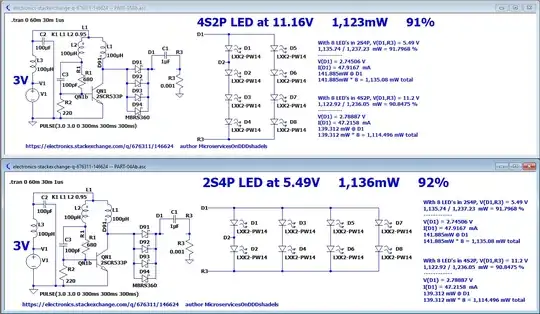TL;DR - based on the physics of LEDs, does current or power give a better estimation of actual light output of an LED?
I am building a dimmer circuit with a few discrete steps, to operate a COB LED from a constant-current source. I want the steps to appear fairly even to the eye, and am using the "square law" dimming curve relating brightness to dimmer position.
I do not have an accurate way to measure my LED's actual brightness, but can measure current and voltage using my power supply. I initially assumed that current would be the right parameter to use to estimate light output (for the purpose of dividing into equal brightness steps according to the dimming curve), but now I'm wondering if using power would give a more technically accurate result. I see lots of discussion and clarification on using current rather than voltage, but I'm hoping someone familiar with the physics of how LEDs operate can clarify whether power correlates more strongly with lumens than current alone?
At any rate, the results are very similar since the voltage does not vary strongly, and so this is more of an academic question than anything else, but I am curious.
